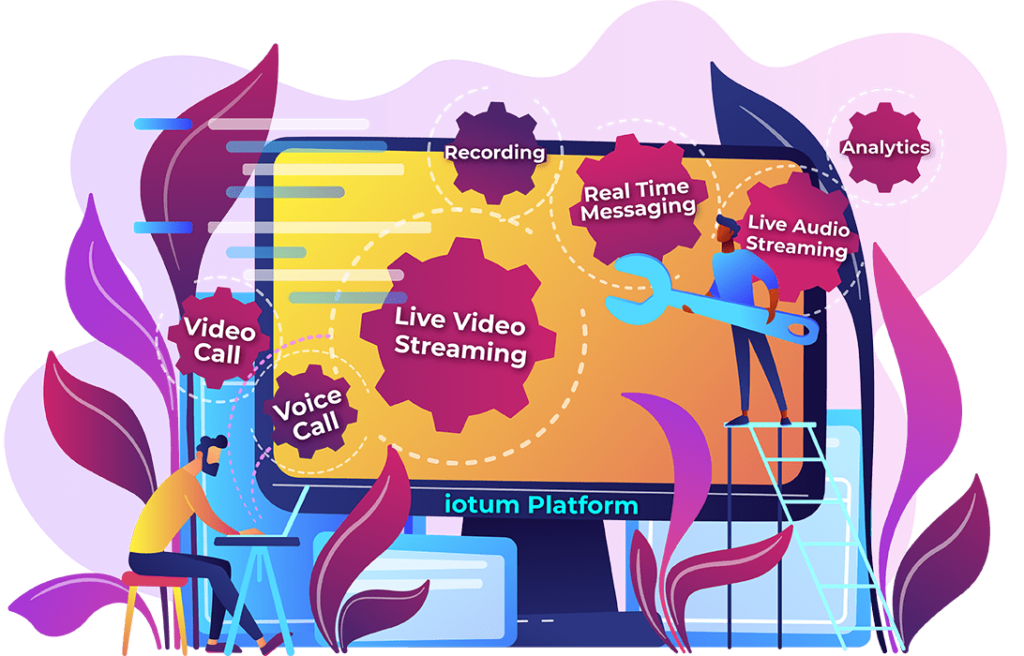 The words we use and the tone we inflect paint a picture of the ideas we’re expressing. Whether in an online meeting, conducting a remote sales presentation, or hosting a live webinar, the emotions that come through can offer key insights.
The words we use and the tone we inflect paint a picture of the ideas we’re expressing. Whether in an online meeting, conducting a remote sales presentation, or hosting a live webinar, the emotions that come through can offer key insights.
Video conferencing with Sentiment Analysis provides businesses with the unparalleled opportunity to gain a deeper understanding of what’s being said amongst prospects, clients, and employees during online meetings and syncs. Intelligent emotion-reading algorithms pull out the meaning behind the text as a way to explore participant satisfaction and so much more.
Interested? Here’s how using video conferencing and Sentiment Analysis can work together to identify and quantify key emotional indicators and help you get a more detailed understanding of what your audience needs.
First, what is a Sentiment Analysis tool?
It’s an AI-operated feature that analyzes text data. Its intelligent engineering is quick to pick up on the immediacy, emotional charge, and tone of exchanges based on data science.
 Pulling out and processing opinions, insights, and feelings is called sentiment mining. Each extracted piece of data is then categorized as positive, negative or neutral so you can better understand the meaning of your meetings, and gain valuable information about what meeting participants are saying.
Pulling out and processing opinions, insights, and feelings is called sentiment mining. Each extracted piece of data is then categorized as positive, negative or neutral so you can better understand the meaning of your meetings, and gain valuable information about what meeting participants are saying.
The Sentiment Analysis Tool empowers how you read your audience and make decisions.
Advantages of Sentiment Analysis Tools
Working alongside video conferencing, sentiment analysis is perfect for dissecting how that new business meeting went or giving you a clearer indication of how the stakeholder received the news!
Of course, there are the complexities of language to consider when it comes to the efficacy and output of Sentiment Analysis. Consider how sarcasm, name recognition, and ambiguity (to name a few) might affect sentiment mining. Plus, “text speak” like emojis, typos, and acronyms.
But there are many beneficial applications of sentiment analysis for your business. Here are a few:
1. Extracting Key Emotion Triggers
First and foremost, the Sentiment Analysis Tool excels at identifying which messages, words and conversations create a change in emotion, positive, negative or neutral. Not only is this beneficial in a client meeting, but this also works towards better understanding the nature and direction of any video or audio conference you have internally or externally. Think about how this can be used in:
- Education: For professors, you can quite literally see the exact moment when learners become interested or lose interest based on their questions, word choice, and vocal cadence. Gaining these insights is especially helpful when creating future content, lectures, and courses.
- Real Estate: In a virtual tour, agents can better determine the emotional temperature of their clients using Sentiment Analysis to see where the deal started picking up traction or lost speed.
- Recruitment: Recruiters, scouts, and HR personnel will know exactly what to do next and how to proceed based on the positive or negative comments made in the online meeting. From there, they can make a phone call, send an appropriate follow-up email, or move on to the next candidate!
- Virtual Sales: Based on the consult or discovery call, whether you’re selling a product or service, the Sentiment Analysis tool will let you in on what your prospect is truly feeling. From there, you can tailor your opt-in and amend your email marketing to speak their language and attract more sales.
2. Get Product Market Research Info
Especially in webinar mode, you can gain valuable nuggets of wisdom by speaking about your product, service, or offering and then looking at the Sentiment Analysis info to see how your information landed. Plus, with the insight bar, questions are marked. Not only will you see participant engagement, but you’ll also be able to comb through and see specific questions.
 3. Address Concerns Quickly
3. Address Concerns Quickly
At the end of the meeting, take a look at the summary to determine what went right or what went a little lopsided. From there, you can celebrate your wins or get to work quickly on the next steps. Or you might have to course-correct and address any problems or go back to the drawing board and make amendments.
4. Deeper Analysis
Track and monitor where there is a lull or spike so you can look back to find out exactly what it was that triggered the response. This helps take the onus off remembering what was said or felt in the moment and feeling pressured to take notes. Instead, it’s all there for you using “+” and “-” signs to keep you informed.
5. Enhance Customer Service
Especially with audio and video chat, you’ll get a clear indication of how the support staff was able to satisfy or not meet the customer’s needs. It becomes very easy to see where more guidance could have addressed the customer’s complaint or where the agent was perfectly attuned. Plus, Sentiment Analysis picks up on questions and marks them in the summary, perfect for training purposes later!
6. Use For Training
Hold on to the recording and Sentiment Tool Analysis summary to train others. Notice how certain remarks and words elicit specific emotions and reactions. This can be taken into account for future meetings and for training and upskilling employees.
With Callbridge, you can understand discussions more deeply with Sentiment Analysis. Really get a feel for the messaging behind the words in any online meeting, presentation, demonstration, tutorial, webinar, and more.
Key Sentiment Analysis features from Callbridge include:
Fast Search: Click on a point to be taken to the exact moment in the meeting
Insight Bar: See where “positive” and “negative” sentences were exchanged
Integration: Zero download, browser-based video conferencing technology
Intelligent Algorithms: Indicates emotional phrases, remarks, questions, and tone of voice.


